What’s with today’s teenagers? Time was when your average teen aspired to sleep for 24 hours every day. The reason they slept for 24 hours every day was there were only 24 hours in the day. Move the dial-up to have a 28-hour day, then they’d pile on the zzzzs through that as well. As for sustenance, any brief moments of wakefulness would be used to consume the meatiest greasiest burgers that could be easily procured…..
Yet in sailing today, the young folk in Ireland who are filled with enthusiasm and seemingly endless vitality as they buzz around afloat and ashore with Optimists, Toppers, 420s, Lasers, 29ers, RS 200s and whatever – well, they simply knock the old-fashioned caricatures of teenagers for six.
Maybe those teenagers in the traditional mould were us. For the present wave of young pace-setters don’t just represent a step change, they seem to embody a total generational turnabout which makes today’s “adults” look like a self-indulgent planet-wrecking bunch of slobs. In fact, some of today’s most globally-prominent adults seem to be the kids chucking the toys out of the pram, while the leading young people appear to be the only adults in the room.
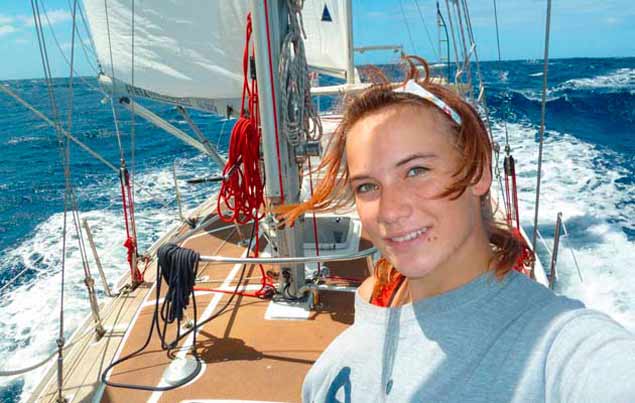 Laura Dekker of The Netherlands during her round the world voyage, which she completed while still 16 in 2011.
Laura Dekker of The Netherlands during her round the world voyage, which she completed while still 16 in 2011.
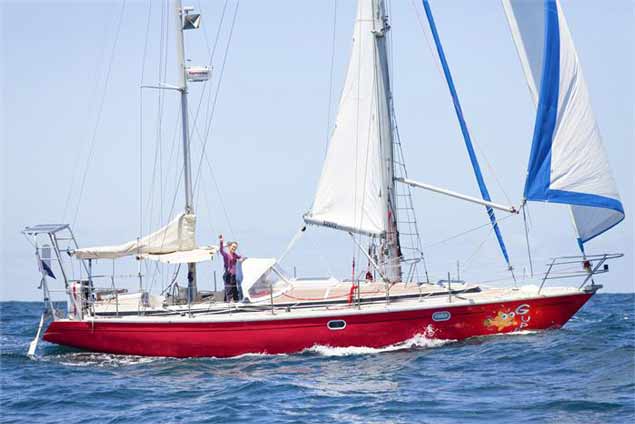 Laura Dekker’s boat was the Jeanneau Gin Fizz 40 Guppy
Laura Dekker’s boat was the Jeanneau Gin Fizz 40 Guppy
Such thoughts will emanate from many contemporary situations, but they particularly struck home from the recent World Sailing annual gathering in the appropriately exotic and geographically isolated setting of Bermuda. From this high-powered gathering – in which Ireland is well-represented in several groups, for dedicated committee work is in our genes – there emerged many decisions and several probable lines of progress.
But most conspicuously of all, they produced the names of the female and male Rolex World Sailors of the Year, and the latter was just 15 years old. That is certainly making the oldies wonder a bit, and then some. But deciding on the winners of such almost impossibly august titles in what aspires to be accepted as a generally equitable method is a mighty task in itself, and World Sailing’s technique is to rely 50% on public voting and 50% decision by the administrators.
Cynics will observed that the two winners come from two of the world’s most numerically large classes, the Lasers and the Optimists. Someone working on your behalf - for you should never do such things personally - will simply have to get your class mates to vote in droves in your favour. Except that it’s usually not actually simple at all - many sorts of stratagems may need to be deployed – but we can imagine that when massively large numbers of votes arrive to boost the chances of a very specific candidate, the final decision-makers are pushed towards their choice in a narrowing channel.
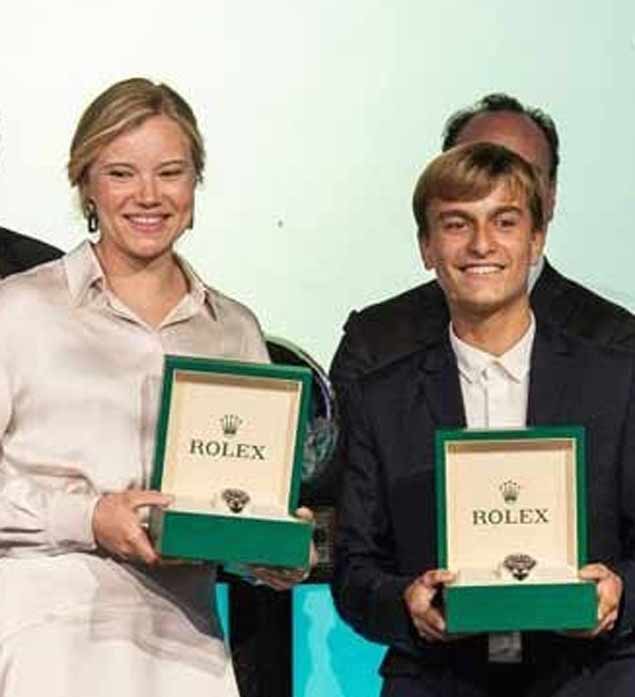 Anne-Marie Rindom and Marco Gradoni with their World Sailing awards in Bermuda
Anne-Marie Rindom and Marco Gradoni with their World Sailing awards in Bermuda
And who could possibly disagree with their selection of Denmark’s Anne-Marie Rindom (28) as the female Sailor of the Year? Her sailing of a Laser Radial to the World Championship and other major titles is done in so utterly natural a way that you get the impression you’re watching a single unified living creature finding the optimum route through the weaving wind and wave-textured sea. Woman and boat become one.
Yet her route to the top wasn’t exactly meteoric. She may have been 21 – at the time thought relatively young – when she first sailed in the Olympics at Weymouth in 2012, but her 13th overall could best be described as “so-so”.
However, by the 2016 Olympics at Rio, she was more into her stride, and she and Ireland’s Annalise Murphy made for a formidable pairing of competitive mates out on the race course, with Murphy getting the Silver while Rindom took the Bronze. The entire final race was edge-of-the-seat stuff for spectators and participants alike, though some top sailors tell us that when you’re actually in the midst of it all, it’s like a sort of out-of-body experience in which you too are a spectator.
Once it was over, any remaining reality disappeared, and Murphy and Rindom abandoned their boats for a while as they jumped into the waters of Rio - not recommended at all by the public health authorities, but then all rules go by the wayside when a couple of Olympic medals are claimed.
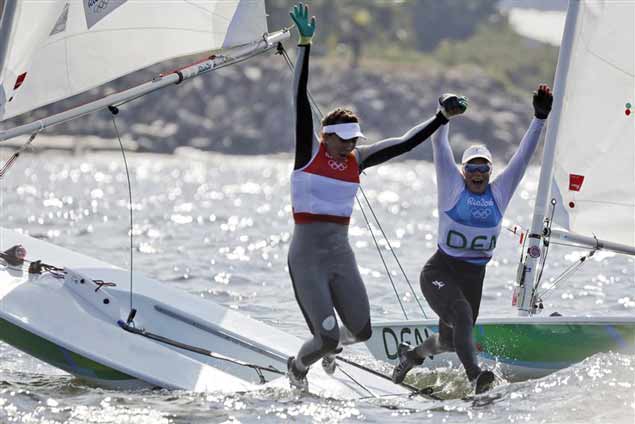 Ireland’s Silver Medallist Annalise Murphy and Demark’s Bronze winner Anne-Marie Rindom take a leap into the murky waters of Rio after their successful conclusion to the Olympic Regatta of 2016.
Ireland’s Silver Medallist Annalise Murphy and Demark’s Bronze winner Anne-Marie Rindom take a leap into the murky waters of Rio after their successful conclusion to the Olympic Regatta of 2016.
Since then, Annalise has been testing a couple of alternative possible sailing career routes before returning to the familiar embrace of the Laser Radial challenge of taking Ireland’s already-secured place in the class in the 2020 Olympics. But - by and large - Anne-Marie has stuck to the knitting, and her Laser Radial sailing has been elevated to a new level, putting her in the unenviable position of being a hot favourite for the Gold at Enoshima, which has something of the poisoned chalice about it.
Yet for now, she’s the Women’s World Sailor for 2019, and that’s enough to be going along with for the time being, even if those addicted to the numbers game cannot help but notice that the Laser has been in the career path for World Sailors three years in a row, with 2018’s Carolijn Brouwer and Marie Roux including the legendary Kirby design in their extensive sailing CVs, while in 2017 it was Marit Bouwmeester of the Netherlands for straightforward overall victory in the Laser Radial Worlds.
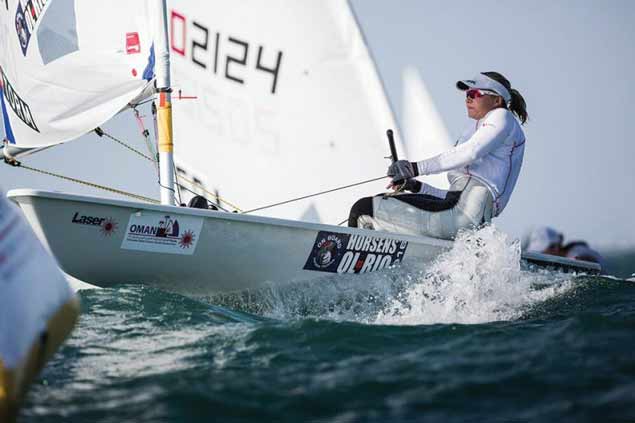 Anne-Marie Rindom in her element – she and her Laser seem blended like a single unit when sailing, and she is the first Dane to become a World Sailor of the Year.
Anne-Marie Rindom in her element – she and her Laser seem blended like a single unit when sailing, and she is the first Dane to become a World Sailor of the Year.
One of the most surprising aspects of the Rindom award is that it’s the first time any Danish sailor has won the top title, but it’s a surprise which pales in significance when set against the fact that the new Men’s World Sailor of the Year is just 15 years old.
We’re well aware this fact is old news for those for those whose primary interest in sailing is the global sport at its top level. But for the rest of us, bumbling around out local classes and club events and regional championships and all the other niche interests which sailing brings, it’s a relatively new fact that really needs to be taken out and set up on a pedestal and contemplated in detail.
For what sort of a world is it when an admittedly hugely-talented sailor like Italy’s Marco Gradoni becomes the global Sailor of the Year at the age of 15?
It’s not so very long ago – indeed, it’s still the situation in significant parts of the media – that editors were reluctant to publish anything in detail about the sporting activity of people under the age of 17. You could get high-flown reasons such as the fact that you were depriving them of their childhood by doing such a thing, and at a more hard-nosed level, you’d get the blunt response that most readers simply weren’t interested in the sport of other people’s kids. They wanted to read about adults facing distinctly adult challenges in which they were ultimately responsible, whereas with reporting your junior sport, there’s always the parent factor. That’s something which you disregard at your peril, making it an area where old-fashioned journos don’t wish to go at all.
It was a viewpoint which seemed to be supported - to take just one example - by the rules of the Rolex Sydney-Hobart Race, which set the lower age limit for participants at 18, despite the fact that several young people have been well into global solo circumnavigations by the time they’re 18, while the Dutch schoolgirl Laura Dekker had completed it by 16.
The reality is that chronological age is an extremely crude instrument with which to measure any individual’s maturity or abilities, and in an ideal world, it would be just one of a whole battery of assessment tools used to provide the complete picture. But we live in a very far from ideal world where such measurement luxuries aren’t widely available, and when the public hear that a 15-year-old has been crowned as the World Sailor of the Year, they immediately summon up their own cliched vision of a “typical” 15-year-old, and respond accordingly – frequently with derision.
Happily, in the more focused world of Irish sailing, we’ve become accustomed to the shifting and rapidly developing focus of the new wave – after all, this is the Greta Thunberg generation – and before the news was announced that Marco Gradoni had been judged top of the tops, we’d lived for a while with knowing that Eve McMahon - aged just 15 yet long since moved on from Optimist sailing – is one of four women sailors looking to take Ireland’s Laser Radial place in Japan next year.
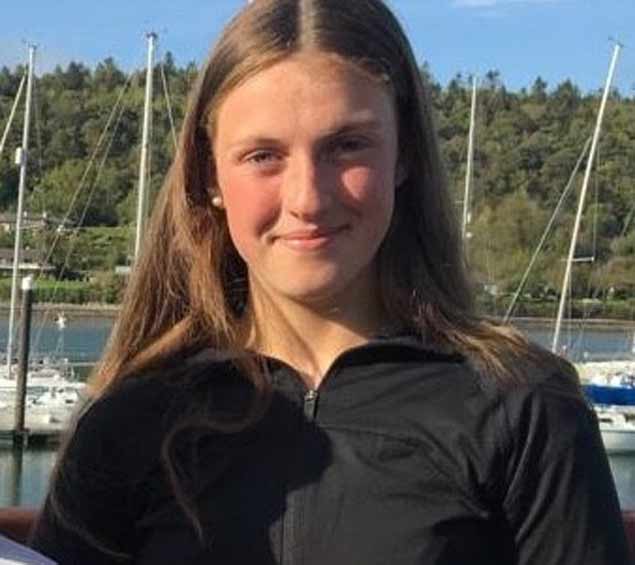 Eve McMahon – changed attitudes towards the maturity of today’s young sailors means that her nomination at age 15 to challenge for an Olympic place is seen in a positive light.
Eve McMahon – changed attitudes towards the maturity of today’s young sailors means that her nomination at age 15 to challenge for an Olympic place is seen in a positive light.
Five years ago we might have said she’s far too young to think of such a thing. But we live in time of unprecedentedly rapid change in attitudes, and in this weird year of 2019, many of us found ourselves thinking: “Fair play to her”. In fact, the Eve McMahon story is at the more interesting stage, while Gradoni’s title marks a conclusion, albeit a great one. He’s at the upper limit age-wise for Optimist sailing, and his victory at the Worlds in Antigua in July – his third in a row – benefited from the good breezes of the venue to off-set his increasing size challenge.
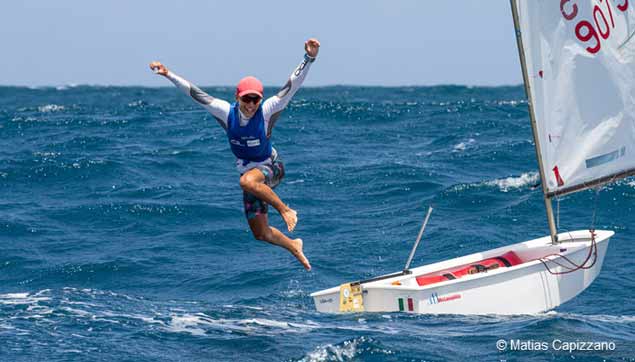 In 2019, at age 15 Marco Gradoni was veering towards the hefty size for competitive Optimist campaigns, but the brisk winds of Antigua worked in his favour at the Worlds, and after winning his third Worlds in a row, he celebrated in classic style. Photo: Optimist Class/Matias Cappizano
In 2019, at age 15 Marco Gradoni was veering towards the hefty size for competitive Optimist campaigns, but the brisk winds of Antigua worked in his favour at the Worlds, and after winning his third Worlds in a row, he celebrated in classic style. Photo: Optimist Class/Matias Cappizano
Three Optimist World titles in a row is unprecedented, and in Gradoni’s case they mark the peak of a wide range of achievement, as he has won just about every major Optimist event in which he has competed since he took his first Worlds at the age of 13 in Thailand in 2017 in a fleet drawn from 65 nations, his successes including emerging first out of 940 boats in the Garda Meeting in 2018.
He’s both a successful solo sailor and a good team player, and while the images show that – like Anne Marie Rindom – he’s at his best when in a boat, he’s comfortable with himself ashore, and mature beyond his years, as is seen in this vid of him receiving the award in Bermuda:
Inevitably there were those present – and commentators subsequently – who have said someone so young should not get such a title, the responses including queries like what on earth young Marco will be able to do with the rest of his sailing life, which will now have to be in other boats.
Certainly, a very reliable source who was in Bermuda tells us that the idea of a lower age limit in future for the title was certainly in the air. But it seems to many that all his stars were in conjunction, that vital little bit of luck was on his side, and it would have been grossly unfair if Marco Gradoni had not become the World Sailor of the Year 2019.
And of course, it means that both titles have gone to European sailors, one from Scandinavia and the other from a Mediterranean country. Our battered old Continent deserves a bit of encouragement right now, for while the focus will swing to Japan for the Olympics next year and the America’s Cup in New Zealand in February 2021, the inexorable countdown to the 2024 Olympics in France will be living with the absence of the European-conceived Finn, once seen as the very essence of the European Olympic sailing spirit.
The Finn has been part of the Olympics since 1952. A mighty animal of a single-hander, racing a Finn is the apotheosis of athletic strength in sailing, providing a marked contrast with the gymnastics of the 49er. But with the final Olympic appearance at Enoshima next July (notwithstanding a last-ditch series of heartfelt appeals by Finn fans in Bermuda), the Finn is now on her way into history, while the future is focusing on the new mixed two-person offshore racer making its debut in France’s Olympics in 2024.
2024 may seem remote future for many, but in terms of putting a new fully-tested offshore racer together and in commission, it’s just around the corner, and in Bermuda, the timeline outlined towards selecting the preferred “equipment” (that’s what boats become in Olympic-speak) is tight enough. The official statement said:
“The criteria for suitable Equipment for the Mixed Offshore qualification events will be published no later than 31 December 2020. At the same time, an additional set of criteria will be published for the Paris 2024 Olympic Games Equipment. The recommendation also stated that the Equipment for Paris 2024 will be selected no later than 31 December 2023”.
The dream showbiz scenario would be to have six or so boats contending for the Olympic position as we near 2024, and then have all six on show at the Paris Boat Show in December 2023, with the announcement of the selected boat being made at the Show. Stranger things have happened in the Olympic circus……
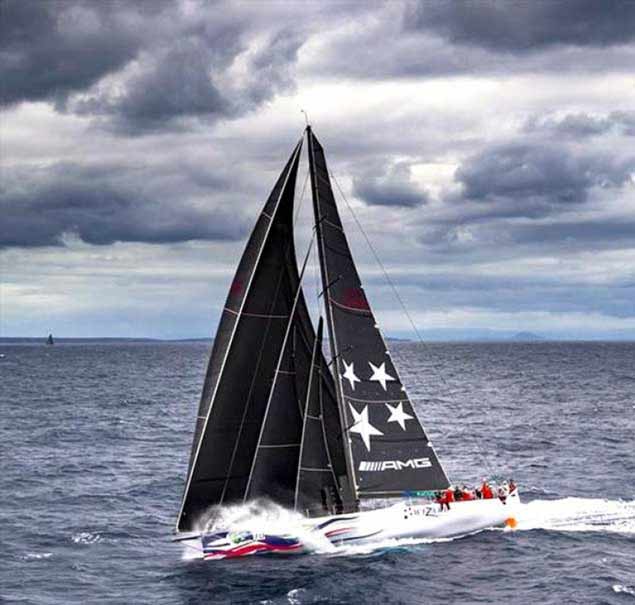 David & Peter Askew’s comprehensively successful Volvo 70 Wizard was voted the World Sailing Hempel “Team of the Year” 2019 in Bermuda.
David & Peter Askew’s comprehensively successful Volvo 70 Wizard was voted the World Sailing Hempel “Team of the Year” 2019 in Bermuda.
Meanwhile, Denmark has its first World Sailor of the Year to celebrate, and we can also take time out to think that the new World Men’s Sailor of the year is too young to have a driving licence or vote in local and national elections, yet in sailing today it seems right and proper that he’s top of the tops.
But then we can make that assertion safe in the knowledge that our favourite boat and crew in 2019, David & Peter Askew’s re-vamped Volvo 70 Wizard from the US, was confirmed as the World Sailing Hempel Team of the Year 2019 at the Bermuda gathering. She’d a dream of a year to win overall in the RORC Caribbean 600, the Transatlantic Race, and the Rolex Fastnet Race - an un-matched trio of classic successes in the space of just six months.
































































